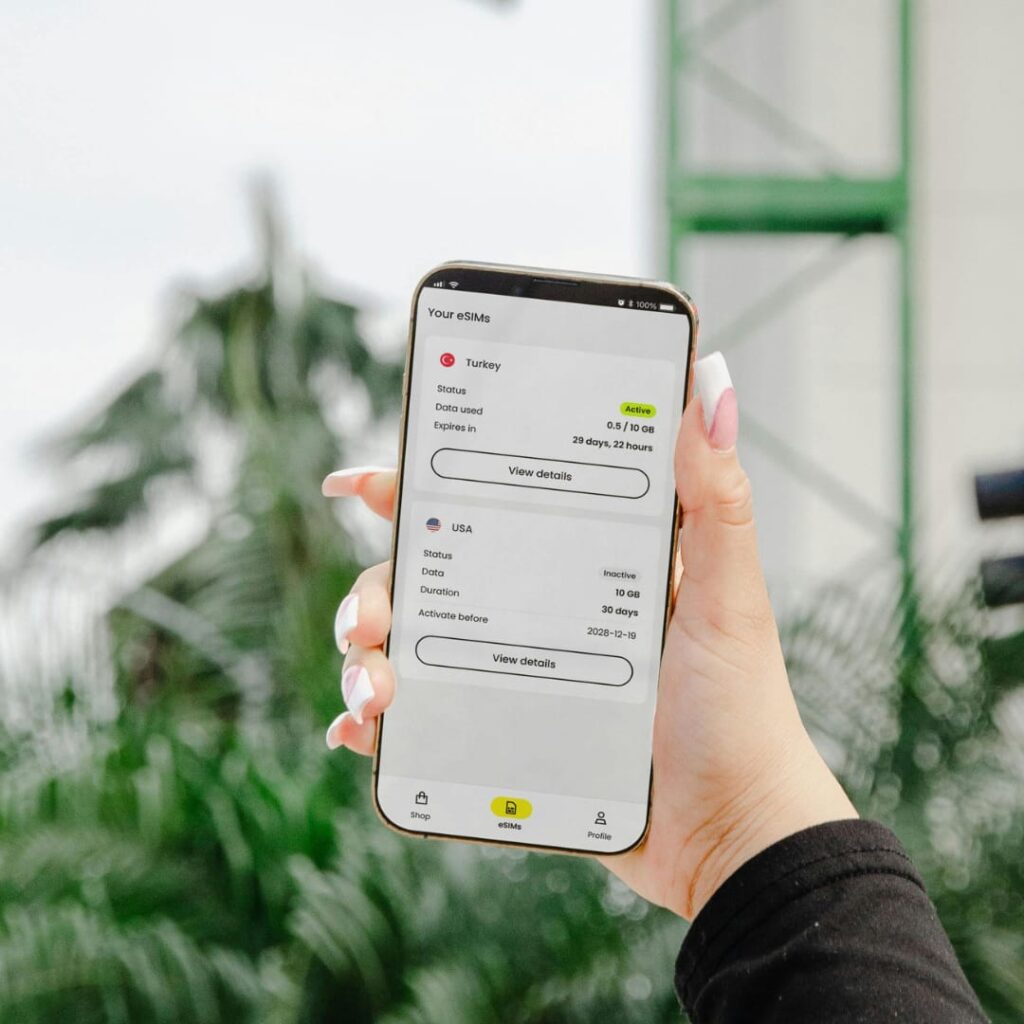As international travel becomes increasingly common, many travelers are opting for eSIM technology to stay connected abroad. eSIMs, or embedded SIMs, offer a convenient way to switch carriers and manage mobile plans without needing a physical SIM card. When it comes to choosing the best eSIM for Europe, there are several factors to consider. This article will guide you through ten essential things to keep in mind to ensure you select the perfect eSIM for your European adventure.
1. Coverage and Network Compatibility
The most crucial aspect of selecting an eSIM for Europe is ensuring it provides extensive coverage across the continent. Europe is home to various countries, each with its own network infrastructure. A good eSIM should offer seamless coverage in multiple countries without requiring frequent plan changes or additional fees.
Look for eSIM providers that have partnerships with multiple local carriers, ensuring broad network compatibility. Some eSIMs offer excellent coverage across the entire European Union (EU) and even beyond, including non-EU countries like Switzerland and Norway. Make sure the eSIM you choose is compatible with your device and supports the network bands used in the countries you plan to visit.
2. Data Allowance and Plan Options
Different eSIM providers offer varying data plans, so it’s essential to choose one that suits your data needs. Consider how much data you’ll require during your trip. Are you a heavy data user who streams videos and uses maps extensively, or do you only need occasional access to emails and social media?

eSIM plans can range from daily to monthly options, with varying data limits. Some providers offer flexible plans that allow you to adjust your data allowance as needed. Be sure to review the plan details and select one that aligns with your usage patterns.
3. Cost and Pricing Structure
Cost is always a significant factor when choosing any service, and eSIMs are no exception. Compare the pricing structures of different eSIM providers to find one that offers good value for money. Keep an eye out for any hidden fees or additional charges, such as activation fees or overage costs.
Some eSIM providers offer special deals or discounts for early bookings or extended plans. Evaluate these offers to see if they provide better value compared to standard rates. Remember that the cheapest option might not always be the best if it compromises on coverage or data quality.
4. Ease of Activation and Setup
One of the main advantages of eSIMs is their convenience, but this can vary depending on the provider. Look for an eSIM provider that offers a straightforward activation and setup process. Ideally, the eSIM should be activated remotely via a QR code or app, allowing you to start using it as soon as you arrive in Europe.
Check customer reviews or testimonials to ensure the activation process is smooth and hassle-free. A provider with a user-friendly interface and clear instructions will save you time and frustration during your travels.
5. Customer Support and Assistance
Good customer support can make a significant difference, especially if you encounter any issues with your eSIM while abroad. Opt for an eSIM provider known for responsive and helpful customer support. This could include 24/7 assistance via phone, chat, or email.
Research the provider’s reputation for customer service by reading reviews or asking for recommendations from other travelers. Effective support can help resolve any connectivity problems or technical issues quickly, ensuring you stay connected without interruptions.
6. Roaming Fees and International Use
If your travels extend beyond Europe, check if the eSIM provider offers competitive roaming rates or international plans. Some eSIMs are designed for regional use and may charge high fees for data usage outside the specified area.
Look for eSIM providers that offer global plans or affordable roaming options if you plan to visit other continents. This can save you money and prevent unexpected charges while traveling internationally.
7. Device Compatibility
Ensure that your device is compatible with the eSIM you intend to purchase. Most modern smartphones, tablets, and smartwatches support eSIM technology, but it’s essential to confirm compatibility with your specific model.
Check the eSIM provider’s website or contact their support team to verify that your device is supported. Additionally, make sure your device’s software is up to date to avoid any compatibility issues.
8. Data Speed and Quality
The quality of data connection can vary between eSIM providers. Look for reviews or information about the network speeds and reliability offered by the eSIM you’re considering. High-speed data is essential for smooth browsing, streaming, and communication.

Some providers offer 4G LTE or even 5G connectivity, which can enhance your internet experience. Check if the eSIM supports the latest network technologies to ensure fast and reliable service throughout your trip.
9. Flexibility and Plan Management
Flexibility in managing your plan can be a significant advantage. Look for eSIM providers that offer easy plan adjustments, allowing you to change your data allowance or switch plans as needed. This flexibility can be beneficial if your data usage patterns change during your trip.
Some eSIM providers offer mobile apps or online portals where you can manage your plan, monitor data usage, and top up as required. Ensure the provider you choose has a user-friendly management system to keep track of your plan and usage.
10. Reviews and Recommendations
Before making a final decision, read reviews and seek recommendations from other travelers who have used eSIMs in Europe. Online forums, travel blogs, and social media can provide valuable insights into the experiences of other users.
Look for feedback on coverage, customer service, data speed, and overall satisfaction. Positive reviews and recommendations can help you make an informed choice and avoid potential pitfalls.
Conclusion
Choosing the best eSIM for Europe involves considering several factors to ensure a smooth and enjoyable travel experience. Focus on coverage and network compatibility, data allowance, cost, ease of activation, customer support, and compatibility with your device. Additionally, consider roaming fees, data speed, flexibility in plan management, and reviews from other travelers.







